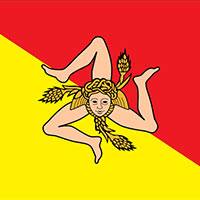Catania
Together with seven other cities in the Val di Noto, Catania is listed among the UNESCO World Heritage Sites.
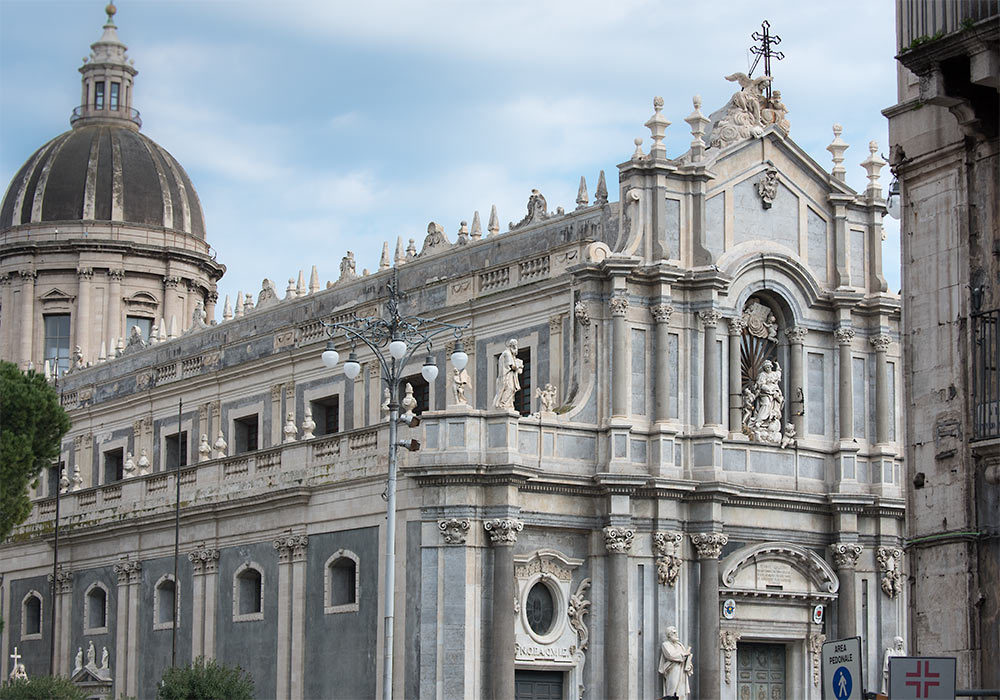
The magnificent cathedral in Catania, founded by Count Roger in 1094, 23 years after the Normans took the town from the Arabs.
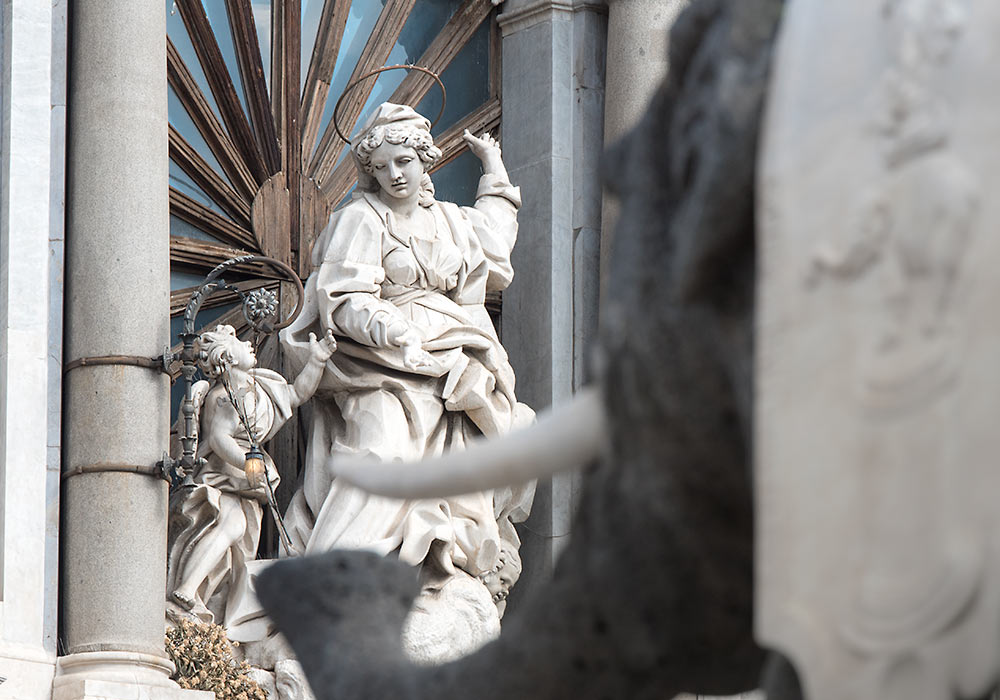
The Cathedral in Catania. To the right the iconic elephant made of lava in the middle of Piazza Duomo, the symbol of Catania.
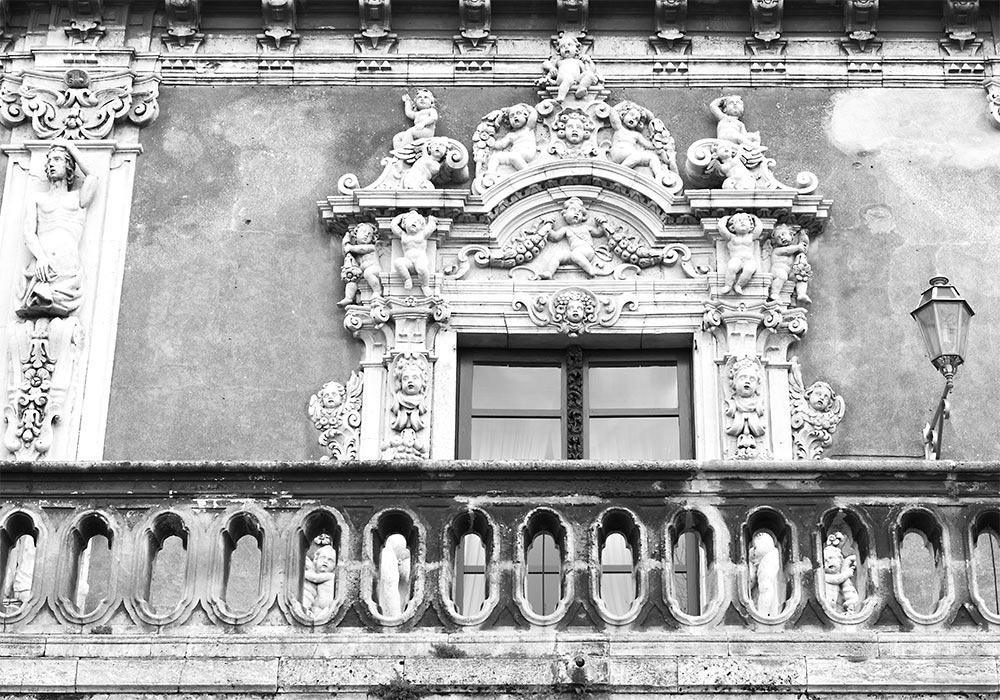
The magnificent exterior of Palazzo Biscari, Catania.
Johann Wolfgang von Goethe visited Palazzo Biscari in May 1787. In his diary he writes: “We were introduced to the Prince who, in an act of special deference, showed us his collection of coins… After having dedicated to this task a certain amount of time, in any case always too little, we were about to take our leave when he wished to introduce us to his mother, in whose apartment were exhibited other miniature works of art… She herself opened for us the glass case in which were housed objects of carved amber… These objects, like the carved seashells which had been worked in Trapani and other exquisite pieces of ivory, were of particular delight to the gentlewoman, who found the means to tell us in passing more than one pleasing anecdote. The prince alone entertained us over more serious matters and so I passed several instructive and pleasant hours. In the meantime the princess had understood that we were German, for which she asked us news of the von Riedesels, the Bartels and the Munters, all of whom were known to her and of whom she had also learned to distinguish and appreciate by character and dress. We reluctantly took our leave of her, and she herself seemed unwilling to let us depart.” J. W. Goethe: Italian Journey: 1786-1788 as cited on www.palazzobiscari.com
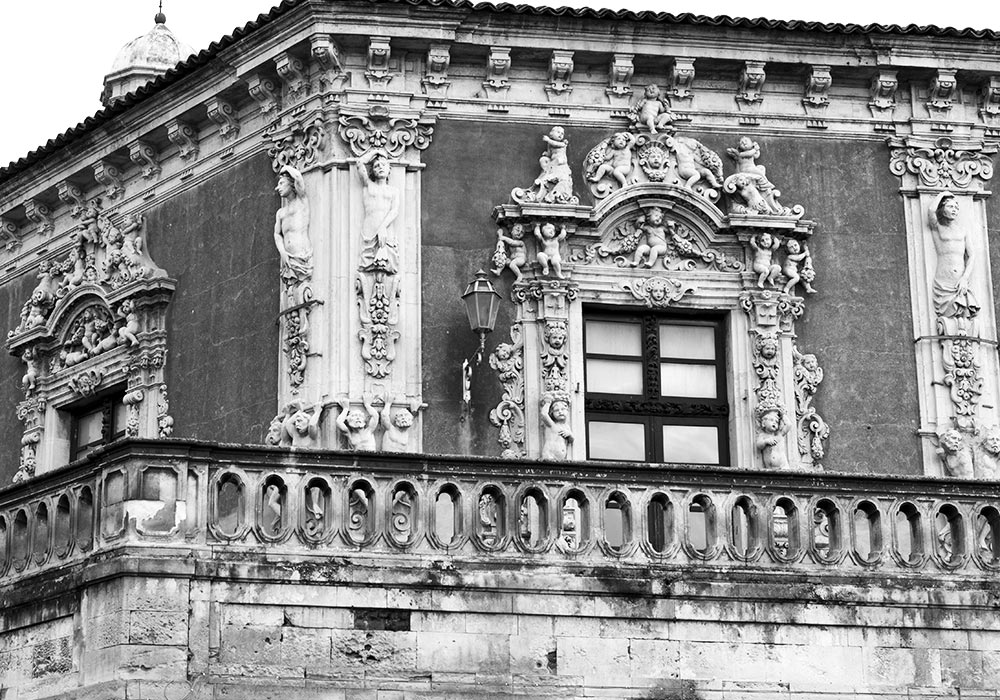
Palazzo Biscari, Catania.
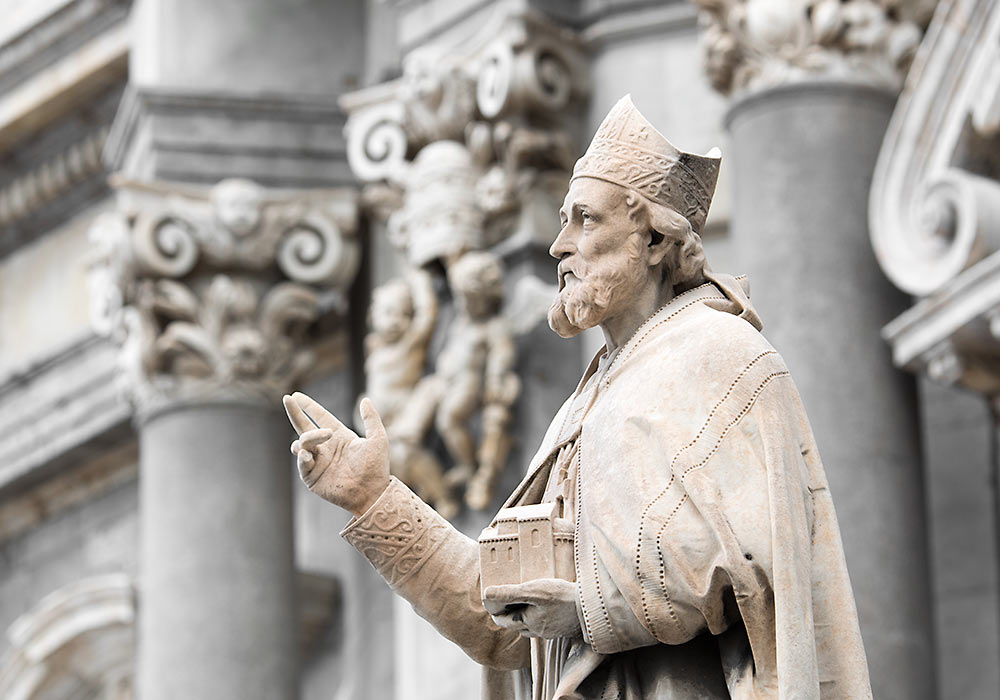
The cathedral (duomo).
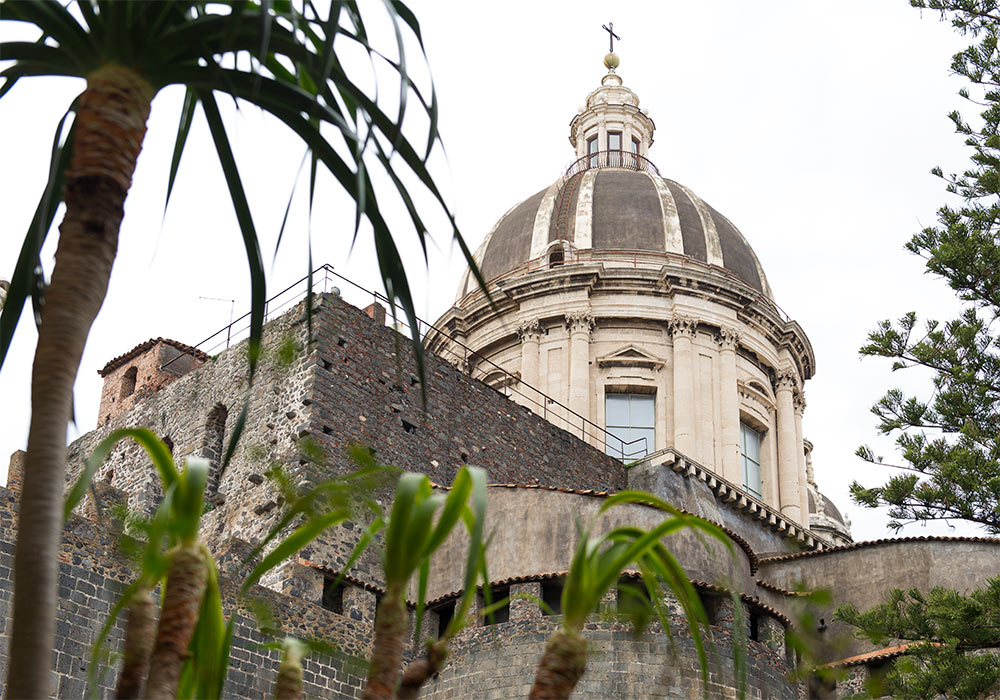
If you walk around the cathedral and enter the gate at no. 159 Via Vittorio Emanuele, you can see the structure of the original Norman church.
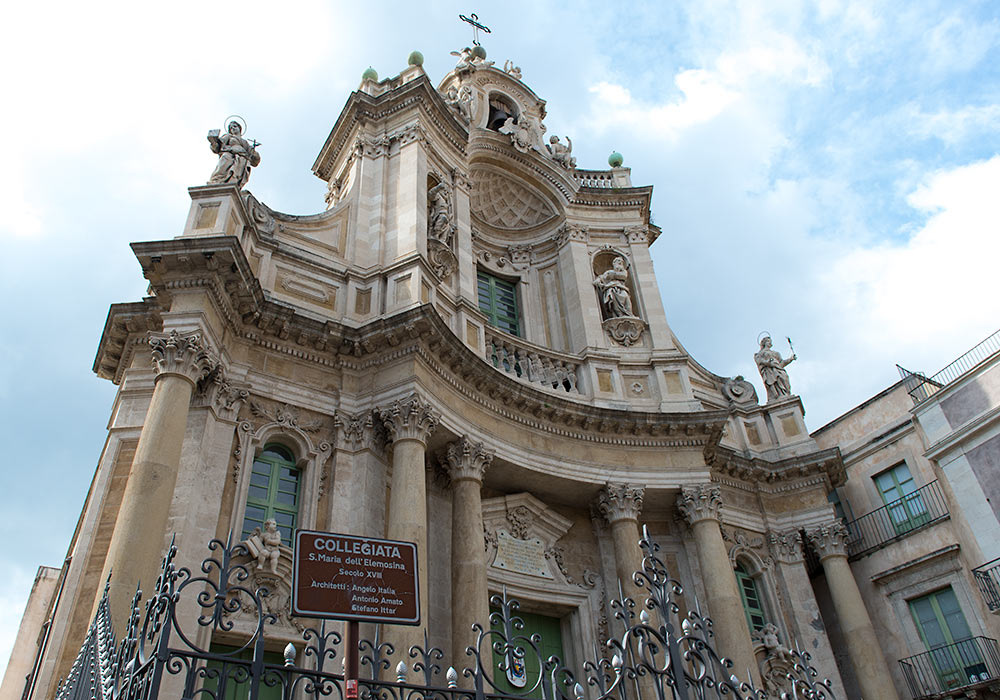
The theatricality of the Sicilian Baroque is wonderful. This is the undulating facade of the royal chapel Collegiata (c. 1768, aka The Basilica della Collegiata and Santa Maria dell'Elemosina). Architects: Stefano Ittar, Angelo Italia and Antonio Amato.
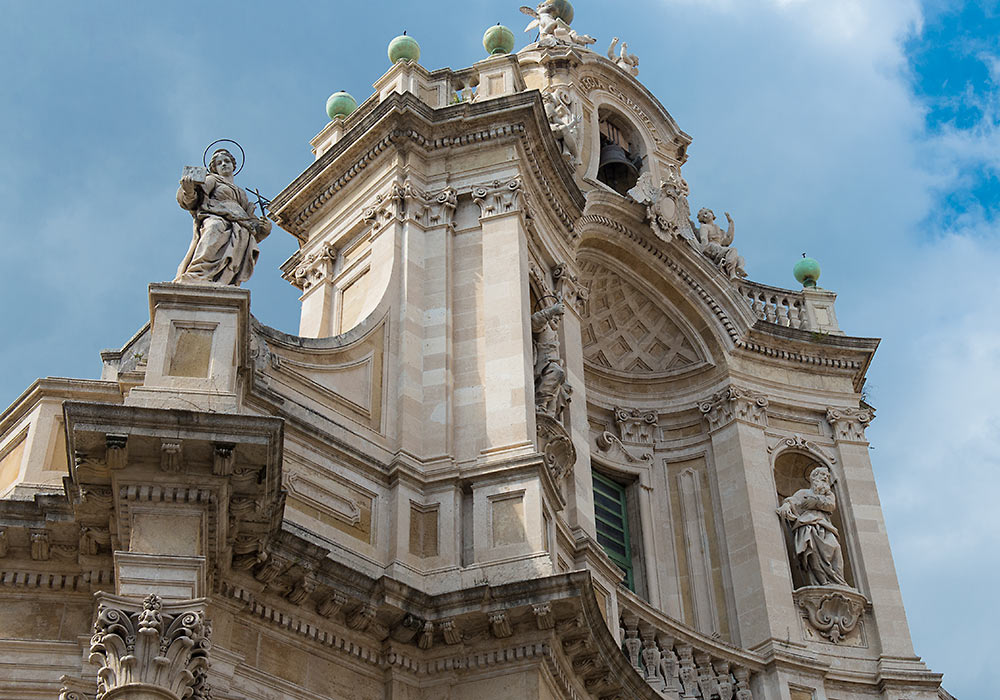
Detail of the undulating facade of the royal chapel Collegiata (c. 1768, aka The Basilica della Collegiata and Santa Maria dell'Elemosina).
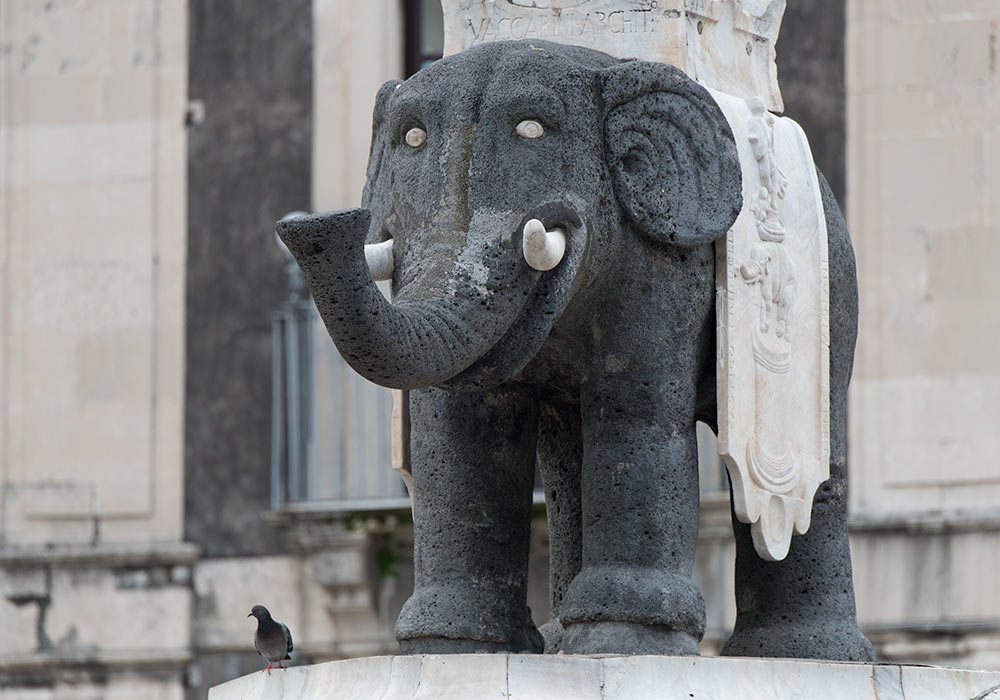
The iconic elephant made of lava in the middle of Piazza Duomo, the symbol of Catania. The Egyptian obelisk on the elephant's back was erected by Giovanni Battista Vaccarini in 1736. (You can see Vaccarini's "signature" just above the elephant's head.)
Saint Agatha
Devoti Tutti takes viewers on a journey to Catania, Sicily, where every year since 251 A.D. the citizens celebrate Saint Agatha through male devotional ecstasy. Inspired by the Italian neo-realist films of the 1950s, the documentary uses these citizens—a 13-year-old street girl, a weathered fisherman—to retell the violent story of Agatha’s breast-martyrdom from a feminist perspective, instilling Agatha with a unique and never-before heard voice.
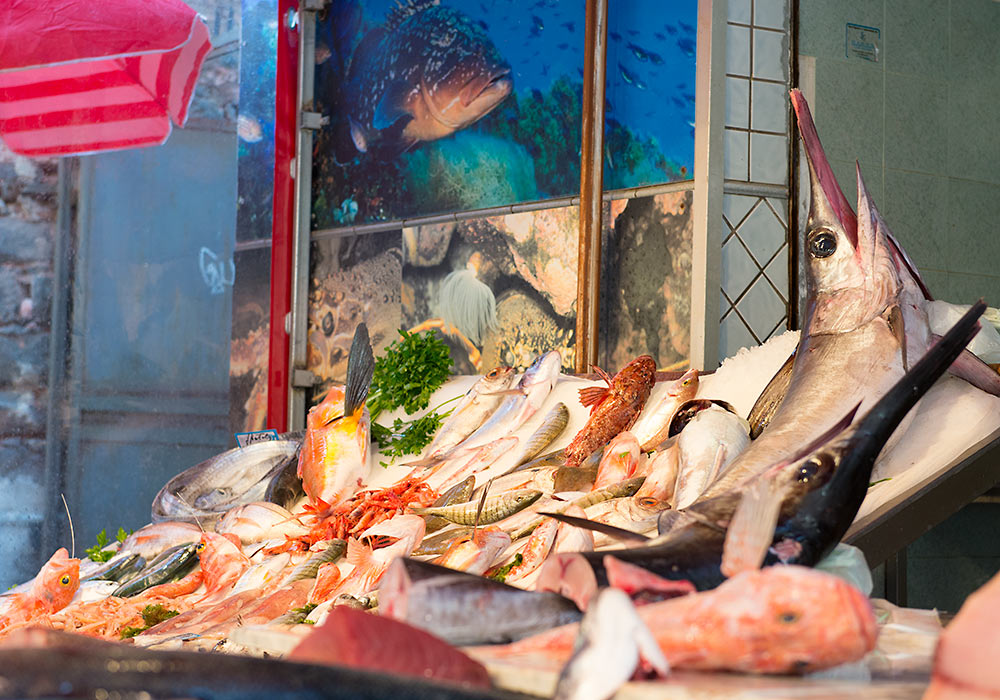
Fish stand on the market in Catania.
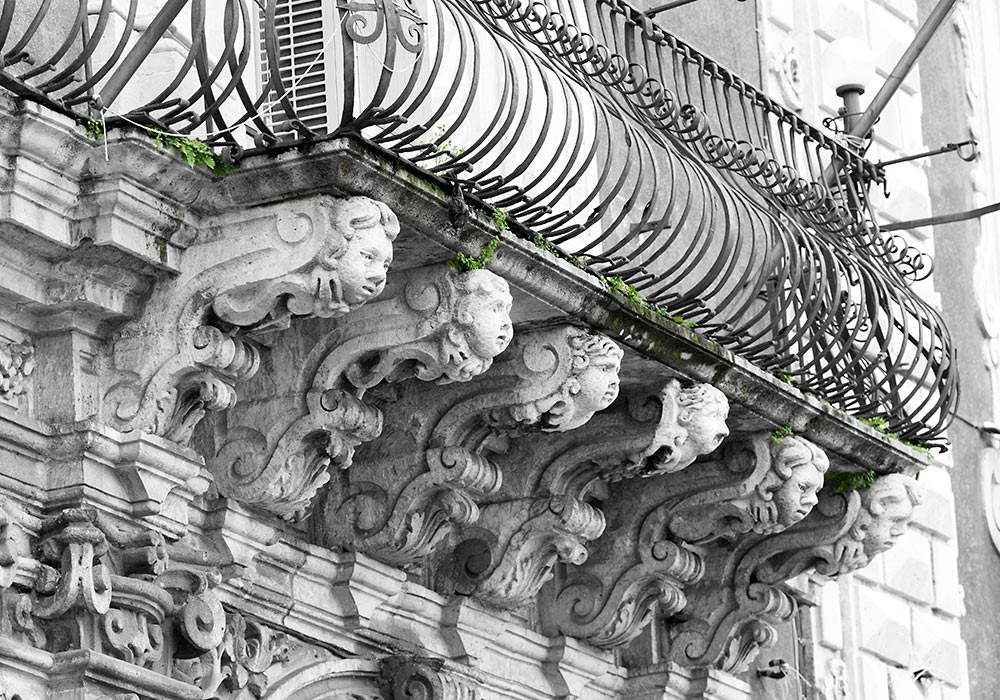
Baroque balcony in Catania.
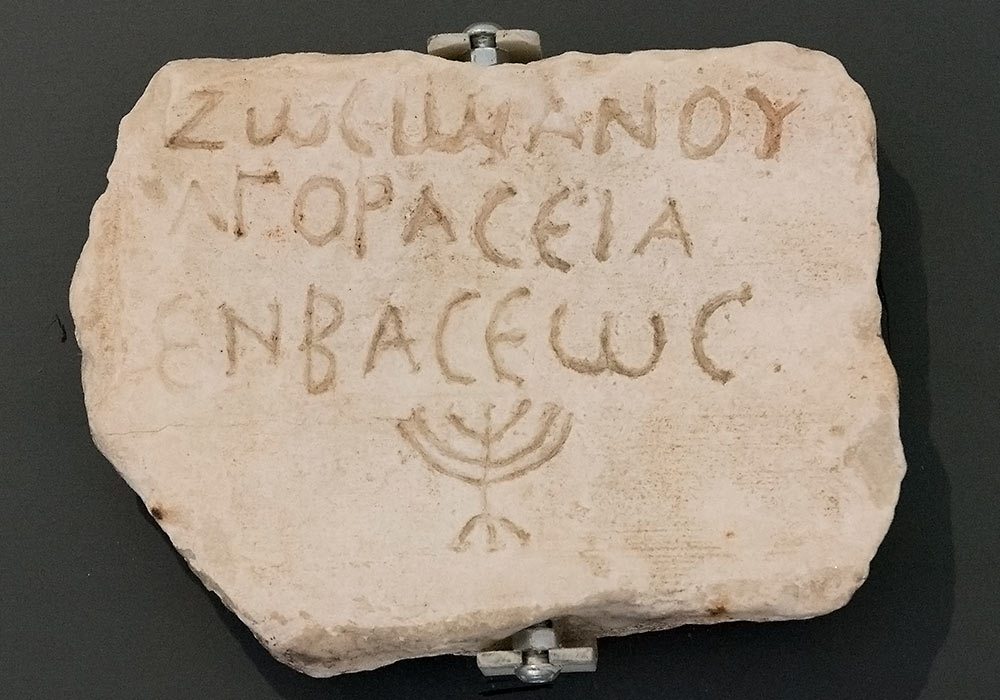
Marble slab with Hebrew funerary inscription (4-5th century AD), found in Catania. Now in the Archeological Museum, Palermo. The text above the seven-branched candelabrum reads: "Of Zosimaianos. Purchase of the tomb."
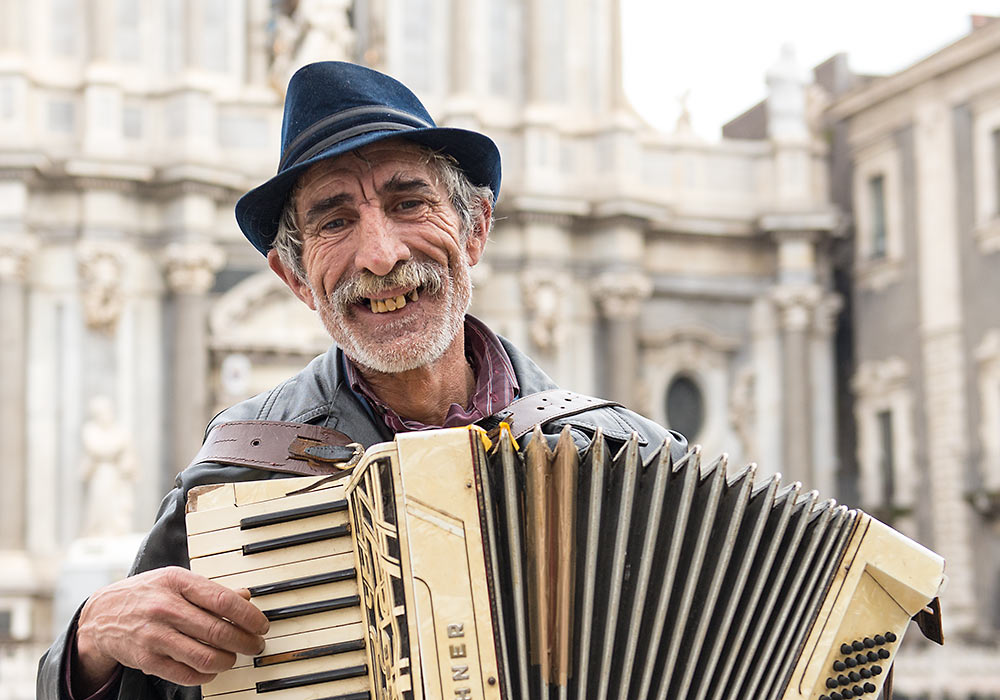
Life in Sicily can be hard, as the smile on the face of this man in front of the cathedral in Catania shows.
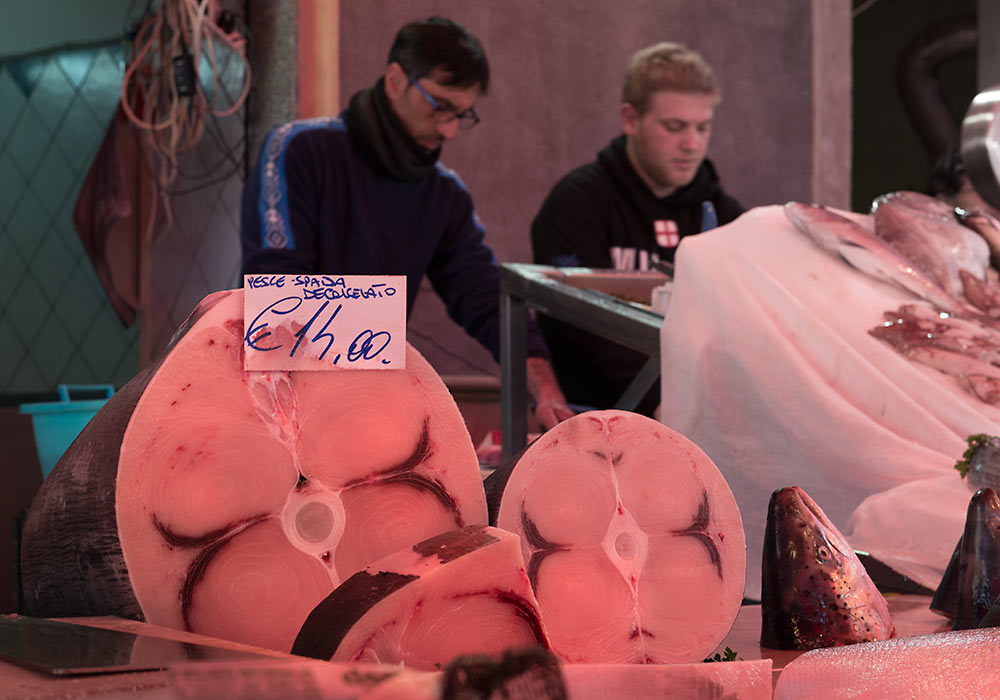
Swordfish for sale on the market in Catania.
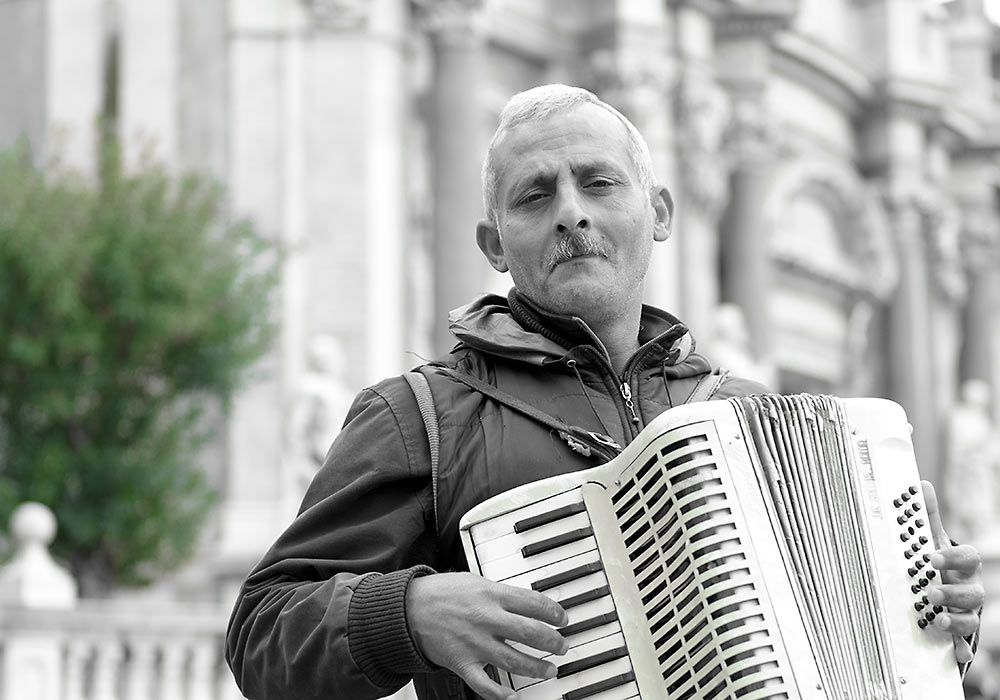
Beggar in front of the cathedral in Catania.
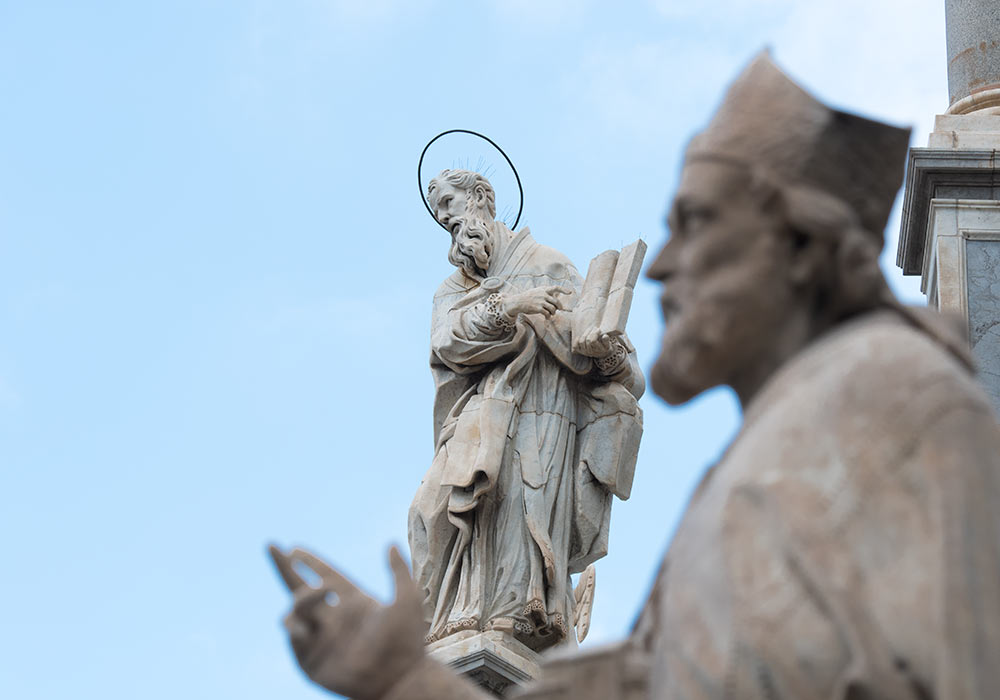
Statues outside the cathedral in Catania.
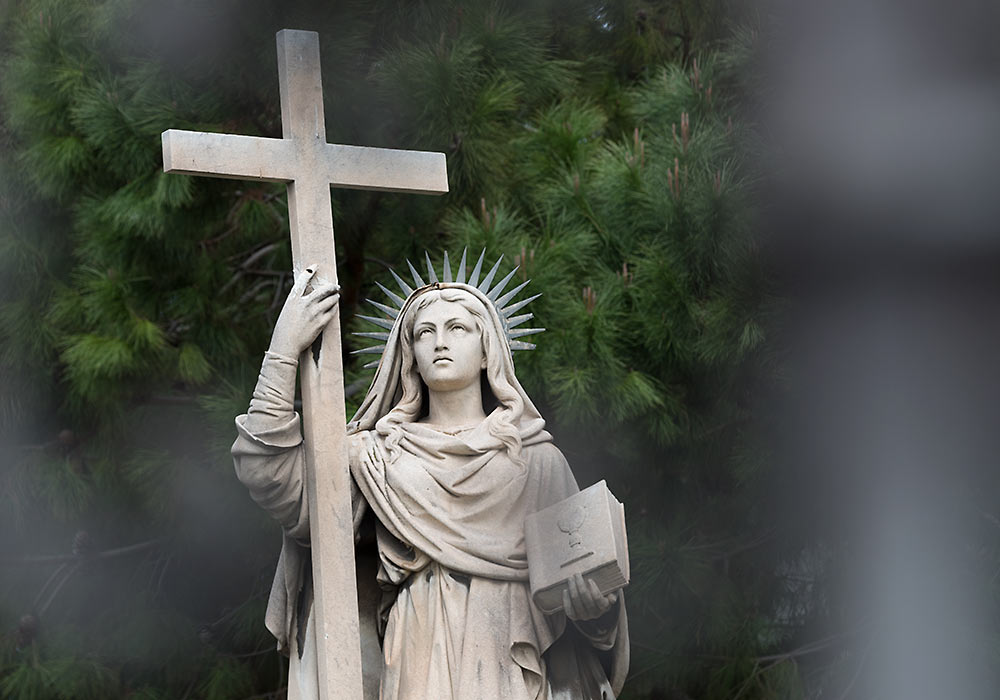
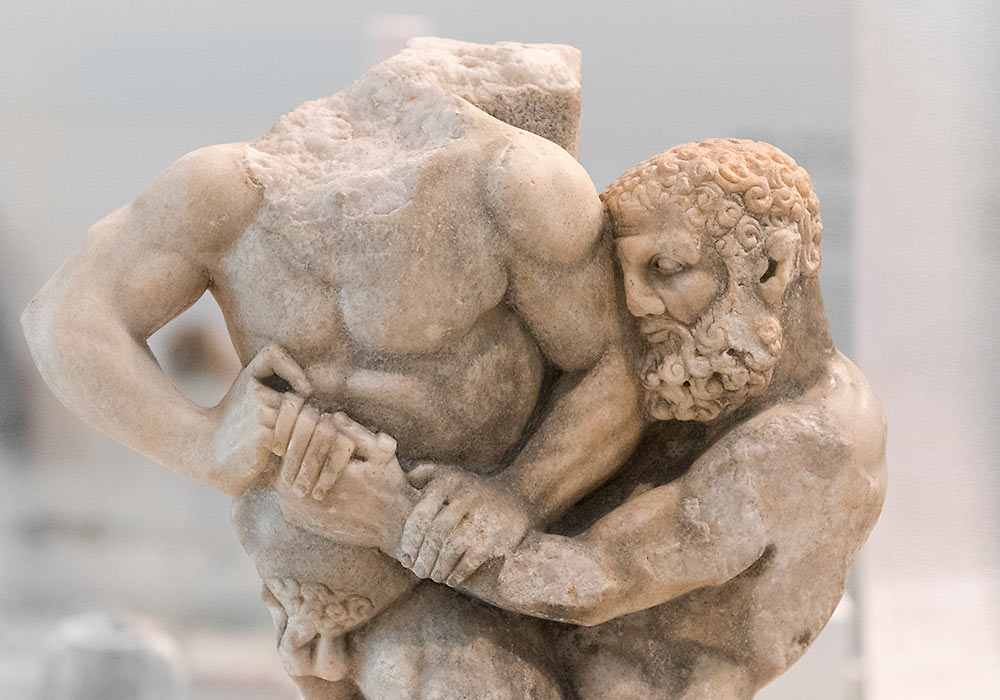
Hercules wrestling with Antaeus. Marble support for table-top. Greek, 200-100 BC. Found off the coast of Catania. Ashmolean Museum / Museo Civico 'Castello Ursino', Catania. The cartibulum was used in grand Roman villas to display the family's silver plate.
Part of the exhibition Storms, War & Shipwrecks - Treasures from the Sicilian Seas at the Ashmolean Museum, June-September 2016.
The late baroque towns of the Val di Noto in South-Eastern Sicily that are inscribed on the UNESCO World Heritage List
The late baroque towns of the Val di Noto in South-Eastern Sicily that are inscribed on the UNESCO World Heritage List are Caltagirone, Militello Val di Catania, Catania, Modica, Noto, Palazzolo, Ragusa and Scicli. These towns were all rebuilt after the earthquake in 1693 on or beside towns. According to UNESCO, they represent a considerable collective undertaking, successfully carried out at a high level of architectural and artistic achievement. Keeping within the late Baroque style of the day, they also depict distinctive innovations in town planning and urban building.
The late baroque towns inscribed on the UNESCO World Heritage List represents the culmination and final flowering of Baroque art in Europe. The exceptional quality of the late Baroque art and architecture in the Val di Noto lies in its geographical and chronological homogeneity, as well as its quantity, the result of the 1693 earthquake in this region. The towns were all in existence in medieval times, characteristically around a castle and with monastic foundations.
Sicilian Sites on UNESCO's World Heritage List
- Agrigento: Archaeological Area of Agrigento (UNESCO)
- Aeolian Islands: Isole Eolie. The group consists of seven islands (Lipari, Vulcano, Salina, Stromboli, Filicudi, Alicudi and Panarea) and five small islets (Basiluzzo, Dattilo, Lisca Nera, Bottaro and Lisca Bianca) in the vicinity of Panarea. (UNESCO)
- Caltagirone (UNESCO)
- Catania (UNESCO)
- Cefalù Cathedral
- Militello Val di Catania (UNESCO)
- Modica (UNESCO)
- Monreale Cathedral
- Mount Etna (UNESCO)
- Noto (UNESCO)
- Palermo: Palazzo dei Normanni (The Norman Palace)
- Palermo: Cappella Palatina (The Palatine Chapel in the Norman Palace)
- Palermo: Church of San Giovanni degli Eremiti
- Palermo: Church of Santa Maria dell'Ammiraglio (also known as the Martorana)
- Palermo: Church of San Cataldo
- Palermo: Cathedral of Palermo
- Palermo: The Zisa Palace (La Zisa)
- Palermo: The Cuba Palace (La Cuba)
- Palazzolo Acreide (UNESCO)
- Ragusa (UNESCO)
- Scicli (UNESCO)
- Syracuse and the Rocky Necropolis of Pantalica (UNESCO)

